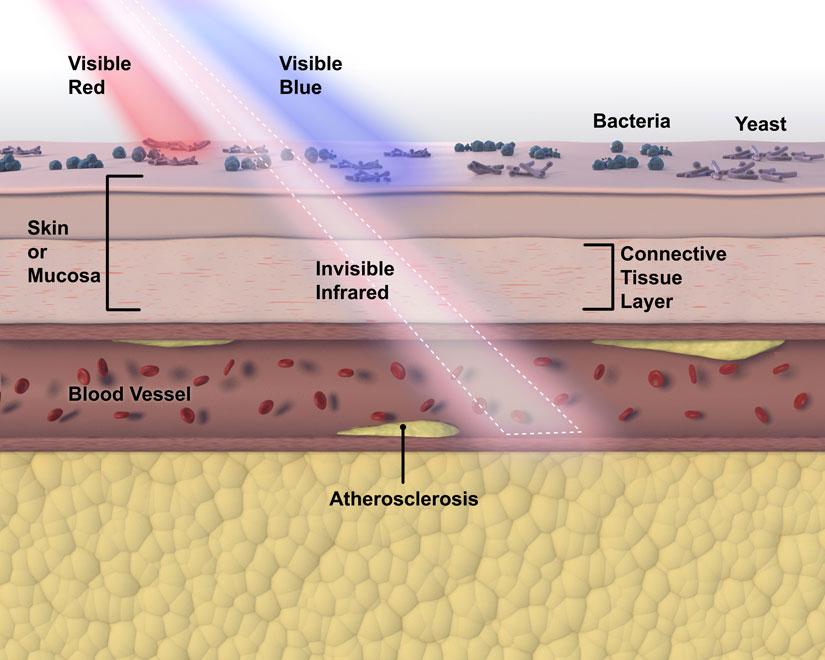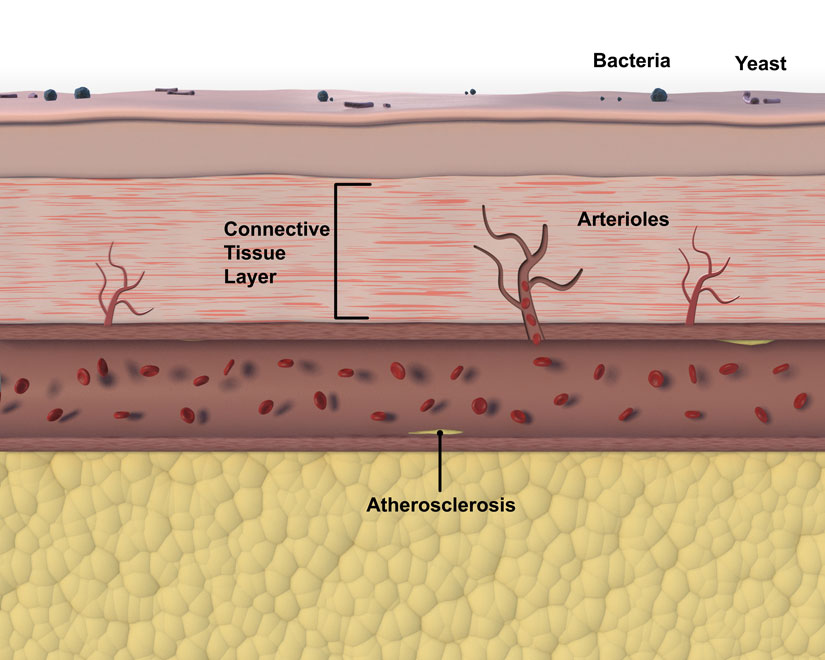Ready for some science? Afterglow™ is not like any other vibrator you’ve experienced, and this is because unparalleled research, design and technology has gone into making Afterglow what it is. Medical science has improved many aspects of our lives, so why not the sexual experience? We hope you enjoy learning a little more about the science of Afterglow.
The effects of light energy on our bodies, also called photobiomodulation, are well known to doctors who use light energy to treat infections, promote healing, and reduce pain. Yet somehow we physicians have overlooked the fact that photobiomodulation can improve sex.
Afterglow was born from our clinical trials utilizing low-level laser energy to treat pelvic pain. For those of you unfamiliar with low-level lasers, they emit much less energy than a household light bulb. During our clinical trials subjects began experiencing improvements in their sexual responses. Subjects reported everything from arousal to better orgasm and even having orgasms for the first time. This was a great and unexpected outcome. All we had to do was figure out a way to put those same wavelengths of light emitted by a thirty thousand dollar laser into an adult toy.
It took almost three years, but we succeeded big time. Not only did we figure out a way to make Afterglow emit the same wavelengths used in our clinical trials, we added additional wavelengths known to decrease yeast and bacteria. We call this proprietary combination of near infrared light, visible blue and red light energy, PulseWave. Our team next tested various vibration patterns with PulseWave to determine which combination created the greatest arousal. This perfect combination of PulseWave and Vibration is what we now call the PulseWave O program. There is even a button on Afterglow to initiate the 7-minute PulseWave O effect.
In a nut shell, or actually in a sexy, soft, silicone and plastic shell, Afterglow is the worlds first vibrator that uses Photobiomodulation to enhance arousal. Afterglow can deliver up to 85 pleasure combinations with and without PulseWave. For those who want less arousal, turn PulseWave off and you still have one of the best vibrators in the sexual universe.
PHOTOBIOMODULATION
Photobiomodulation is a word used to describe the effects of light on living tissue. These effects may include improved blood flow, improved blood vessel health, the formation of new blood vessels, thickening of older tissues by formation of new collagen, reduction in pathogenic bacteria, and even reduction in fungus such as yeast. Light in the visible red, visible blue and invisible near infrared spectra all have unique effects on the body. The PulseWave™ technology inside the Afterglow vibrator utilizes these unique wavelengths.
Click here for a detailed explanation of Photobiomodulation.

Red, blue and near IR light energies are shined on tissue.
Red and blue light interact with bacteria on skin surfaces. Near infrared light effects the cells of blood vessel walls and can increase blood flow.

Multiple exposures to these wavelengths of light energy may result in decreased bacterial and yeast counts. Rejuvenating effects such as a reduction in atherosclerosis and the formation of new collagen may occur. Additionally the creation of new small blood vessels can improve circulation.
Click here for a detailed explanation of Photobiomodulation.
There are hundreds of medical articles detailing the effects of various wavelengths on human and animal tissues. The breath and detail of the literature can be overwhelming. We have provided these animations and text as our brief summary of the science of Photobiomodulation. We do realize that other scientists may have differing explanations. PulseWave is a proprietary combination of unique pulsed light energy and vibration designed to enhance arousal.
If you have any further questions about the science of Afterglow, please feel free to email us at science@afterglowscience.com.